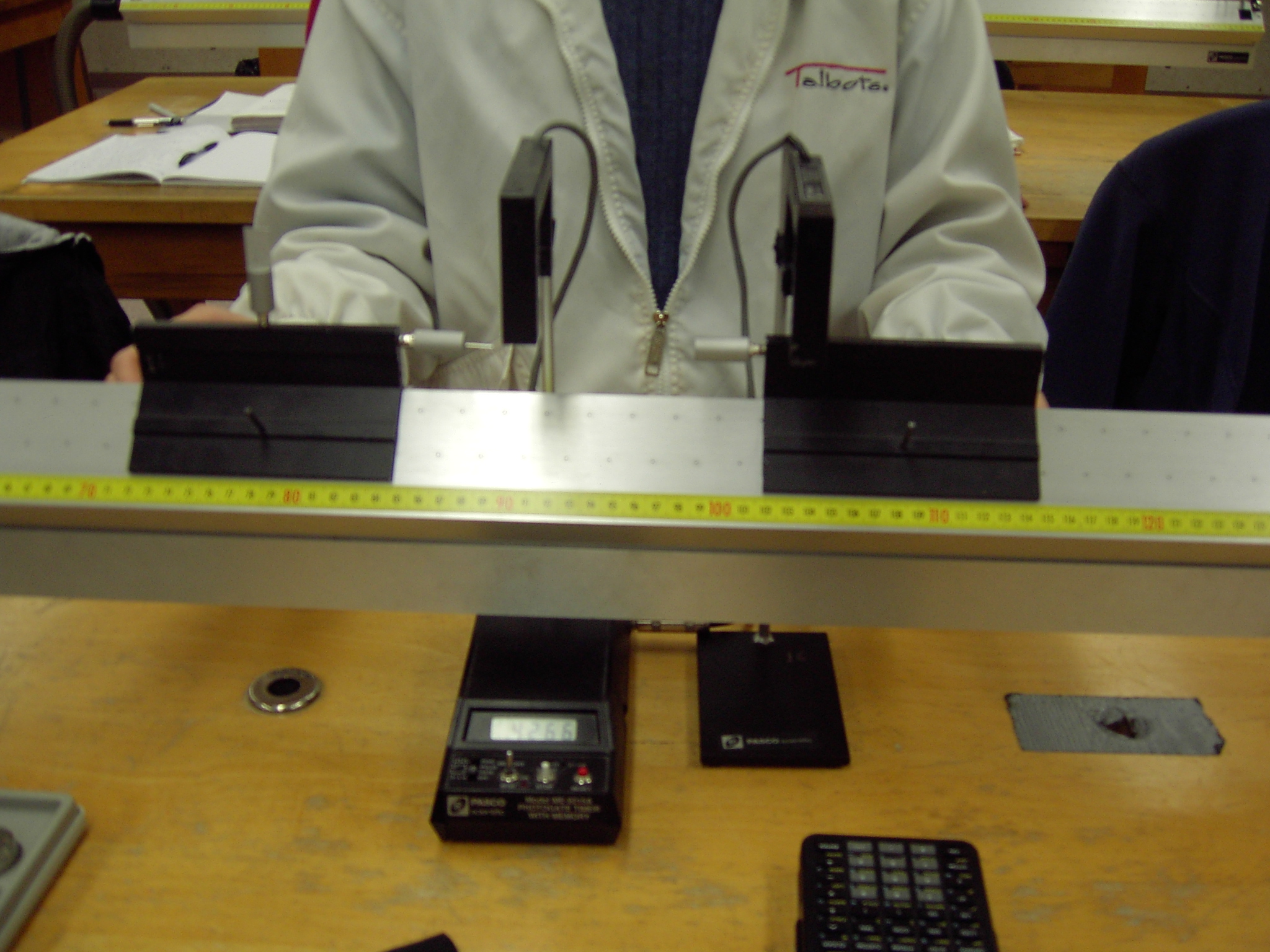
Equipment List:
Purpose:
In this lab you will investigate momentum conservation and kinetic
energy losses in a totally inelastic collision.
Procedure:
After setting up your track, leveling it, finding the effective lengths, getting your photogates optimally spaced, and all other relevant aligments, take some practice runs before taking actual data. When you are ready, perform five runs. A "run" consists of gently pushing the first glider and letting go before it goes through the first photogate (its velocity through the gate should be less than 1 m/s and even less than 0.1 m/s for best results; you don't want any "clatter" when the two gliders collide). The second glider should have zero velocity before the collision. The two gliders collide, stick together, and then go through the second photogate. The photogates should be as close together as possible to minimize systematic errors. The second photogate should record its time as soon after the collision as possible and the first photogate should measure its time just before the collision as much as is possible. The initial velocity of the first glider does not have to be the same for each run because the analysis, as discussed below, is concerned only with the difference between the initial and final momentum.
To have the gliders
stick
together, use two special cylinders from your accessory kit. One
cylinder
has some wax in one end; another cylinder has a small needle covered
with
a protective cork cover. Together, the needle and the wax cylinders
allow
the gliders to stick together after they collide. It doesn't matter
which
glider has which cylinder.

In the photograph above, glider 1 (on the left) has the only flag.
Its flag triggers the left photogate for the glider's time before the
collision. Then very soon after the collision, the same flag on glider
1 will trigger the right photogate. You can see how close the two
photogates can be to one another (which is desirable) when using this
method.
Theory:
Derive a formula that predicts the fractional loss in the total kinetic energy of both gliders after the collision compared to before the collision in terms of the two masses only.Data:
Record the mass of each
glider, including all attached cylinders. Find the effective length for
each photogate with the flag that goes through it. Perform your runs
and record the times. Use gate mode and 0.1 mS resolution. The
numerical distance between the
photogates is irrelevant.
Calculations:
Calculate the initial
and
final momentums and initial and final kinetic energies for both gliders
for
all five runs. For each run, calculate the change in momentum
(remember to use the units of kg m/s) between the initial and final
conditions. If the momentum is conserved, you would expect this change
to be zero. Because of real dissipative external forces, the actual
momentum change will tend to be negative. Use the "statistical method"
to find the average fractional
change in momentum and its absolute uncertainty. By "fractional" change
in momentum, it is meant the change in momentum divided by the initial
momentum;
this gives a sense as to how large the momentum change is relative to
the
initial value. Also, due to random flucuations in your measurements,
you
may find your change in momentum to be sometimes positive and sometimes
negatve, this is acceptable. Calculate the fractional percent loss of
kinetic
energy for each run. Then calculate the average fractional kinetic
energy
loss and its uncertainty by the statistical method. From the derivation
in the theory section above, you can see how close your experimental
loss
is to the theoretical loss. Would you expect the experimental loss in
energy
to be greater or less than the theoretical? Why?
Analysis:
Compare your experimental results to your theoretical predictions for the momentum and the kinetic energy of your collsions.
Conclusion:
Well, how did it go?
Suggestions for improvements?
Sample Collsion in AVI format (the arrangement shown could be improved, do you see how?)
Tips: